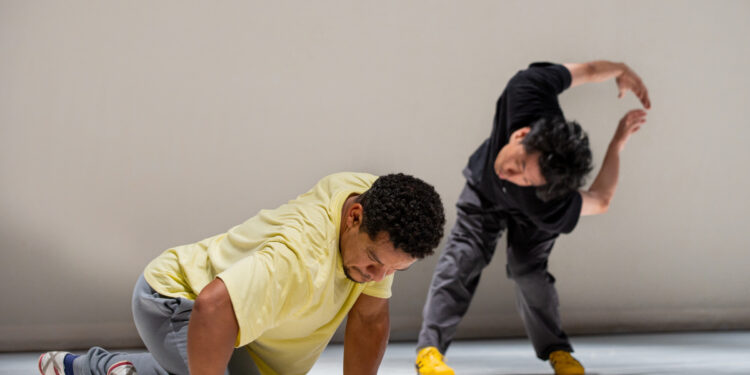The Torque International Contemporary Dance Series
The Harbourfront Centre and DanceWorks presents: Deciphers as part of the Torque International Contemporary Dance Series.
This physical performance by Naishi Wang and Jean Abreu uses Chinese Folk, Brazilian dance styles, and spoken word to explore the ideas of “understanding” and “misunderstanding”. Deciphers centers on the theme of translation, primarily from an immigrant perspective.
With Deciphers’s use of varying artistic and cultural elements, the piece embraces and encourages a healthy level of confusion. I personally have limited experience watching contemporary dance, a very limited understanding of Portuguese, and my own immigration experience that is different from Wang and Abreu’s.
Through this, I felt myself imposing my own personal meaning at some parts while assuming different meanings from the parts I didn’t fully understand– both of which were enjoyable. Overall, every audience member will have their own unique interpretation of Deciphers that compels them to live in that world of “understanding” and “misunderstanding.”
The performance “begins” the second you enter the theater, with Wang and Abreu scribbling on a long, thin piece of white paper that stretches across the stage. Although this type of pre-show performance sometimes feels artificial, its usage in Deciphers offers a glimpse into the performers’ real personalities that are later explored throughout the show. In addition to their scribbling, they occasionally greet people in the audience or move around to draw somewhere else on the paper. Then, the light slowly fades down, and the actual show begins.
After this piece of paper covered with words and drawings is showcased to us, it is crumbled tightly and flattened. It then naturally unwinds to become the centerpiece that the movement revolves around. I was very curious about how movement could portray the theme of “translation”, but the motif reveals itself more and more as the piece evolves. The centerpiece acts as a divider between the dancers, allowing them to mirror, contrast, or travel around.
Sometimes, the two of them are perfectly in sync, and the crumbled paper creates a very clear visual symmetry. Because of that clear divide, it is also evident when they’re not in sync – when one is leading, and the other is trying to emulate them. At one point, one would respond to a sound or movement or invisible world in front of them, and the other would take an opposite route.
Their movement is clean, but feels organic and impulse-driven, making their synchronized movements even more impactful. I particularly liked a sequence of them travelling around space quadrupedally while bobbing their heads like animals.
Personally, it was difficult for me to discern when they were using specific dance styles, but this enriched the experience. In a recent profile, I did on Wang and Abreu, they talked about their use of “fusion,” presenting contemporary dance that is not fully Western, and Chinese folk and Brazilian dance that is not fully either of those cultures– instead using that physical translation to showcase a mix of everything. The frequent lack of music also helps make the precise dance styles discernable, allowing the audience to focus solely on how movement is translated.
An element I would have loved to see integrated more is the spoken word in Portuguese and Mandarin. Since I couldn’t understand the text, I got to focus on the dynamic soundscape created by the two very tonally and rhythmically different languages. The few English words used sometimes contextualized the little Portuguese I understood, while other times threw me for a loop. The authoritativeness of their voices gave me the impression that this scene represented a government office or airport, with the lines discussing immigration directly. However, there is no way for me to know for sure, which made it exciting.
Although I think text should be limited in a physical performance, I’m not sure if I would’ve picked up on the themes of immigration without it. Therefore, I’m glad there weren’t more full text-based scenes, but I’m curious to see how text could further contextualize or even complicate some of the fully-physical sequences.
Overall, I think the performance perfectly encapsulates that central theme of “translation”, and it simultaneously embraces and alienates the audience through what Wang and Abreu allow us to understand.
‘Deciphers’ co-presented by Harbourfront Centre and DanceWorks.
Choreographers, Performers Naishi Wang, Jean Abreu
Sound Design Olesia Onykiienko
Lighting Design Lucie Bazzo
Dramaturg Guy Cools
Outside Eyes Ginelle Chagnon
Rehearsal Director Xing Bang Fu
Voice Coach Fides Krucker
Access Consultant Zed Lightheart
Technical Director Emerson Kafarowski
Management Jean Abreu Dance, Dance Umbrella of Ontario















